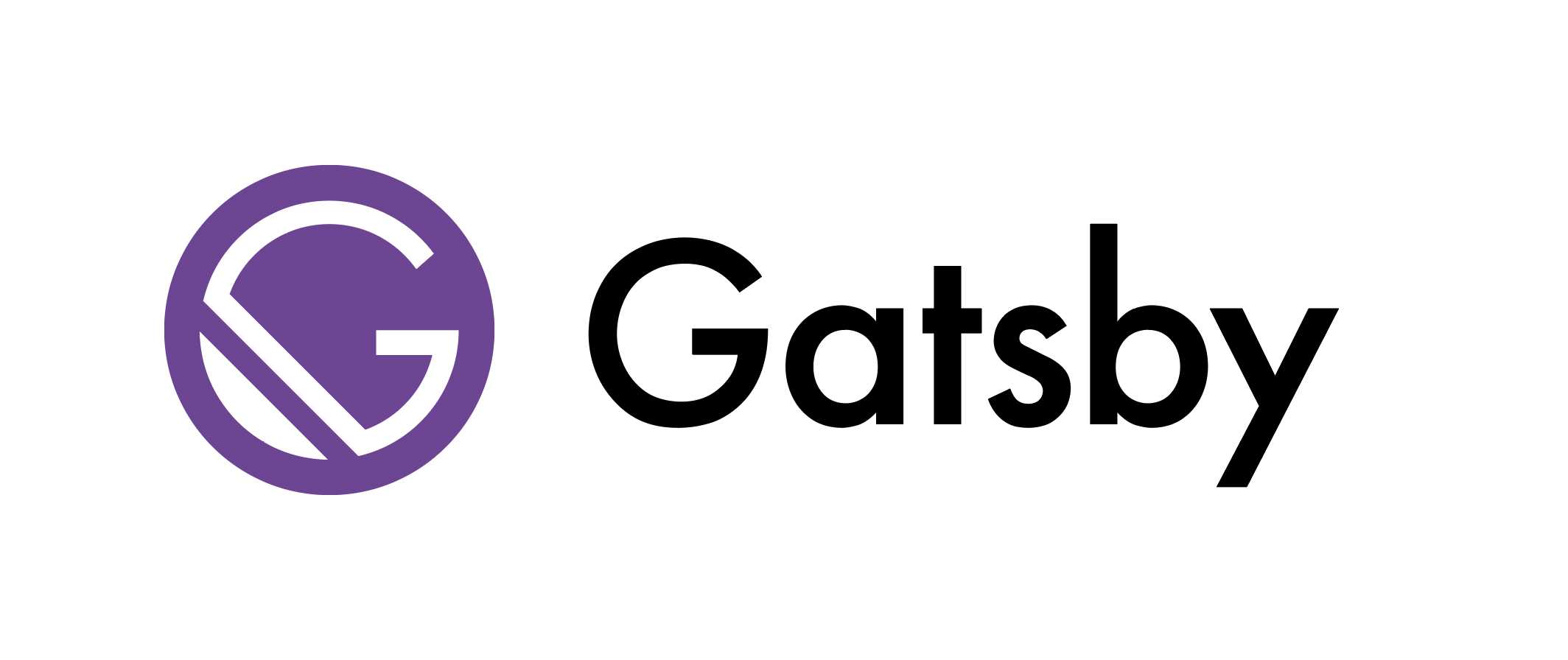This blog post was originally posted on the Khaled Garbaya Blog

create-react-app is a build CLI, it helps you bootstrap a new React app without the need to configure tools like webpack or Babel.
They are preconfigured and hidden so that you can focus on the code.
If you came across Gatsby you will notice that there is a lot of similarity between them. In this blog post I will explain the key difference between the two.
What is Gatsby?

Gatsby is a blazing fast static site generator for React. Actually, it is more than that. Think of it as a PWA (Progressive Web App) framework with best practices baked in. For example: you get code and data splitting out-of-the-box.
Why Move to Gatsby?

Gatsby lets you use a modern web stack without the setup headache. With its flexible plugin system it lets you bring your own data sources like Contentful, databases or your filesystem.
When you build your Gatsby website you will end up with static files. They are easy to deploy on a lot of services like Netlify, Amazon S3 and more.
Gatsby provides code and data splitting out-of-the-box. It loads your critical HTML and CSS first. Once that’s loaded it prefetches resources for other pages. That’s why clicking around feels so fast.
Gatsby uses React components as a view layer so you can share and reuse them across pages/projects. Once it loads the page’s JavaScript code, your website becomes a full React app.
Gatsby uses GraphQL to share data across pages. You only get the data you need in the page. At build time Gatsby will resolve the query and embed it in your page.
Gatsby project folder structure
├── LICENSE
├── README.md
├── gatsby-config.js
├── gatsby-node.js
├── node_modules
├── package-lock.json
├── package.json
├── src
│ ├── layouts
│ ├── pages
│ └── templates
└── staticFrom React Routes to Gatsby Pages

There are two types of routes:
- static - when you know all the parts that will define your route, like
/home - dynamic - when part of your route is only known at runtime like,
blog/:slug
Let’s assume you have the following static routes in your create-react-app project:
<Route exact path='/' component={Home} />
<Route path='/blog' component={Blog} />
<Route path='/contact' component={Contact} />Gatsby will create these routes automatically based on files you create in your pages folder. The good news is you’ve already created the React components so it’s a matter of copying them to the right place. The exception is the home page which should be named index.js. You will end up with something like this:
├── LICENSE
├── README.md
├── gatsby-config.js
├── gatsby-node.js
├── node_modules
├── package-lock.json
├── package.json
├── src
│ ├── layouts
│ ├── pages
│ │ ├── index.js
│ │ ├── blog.js
│ │ ├── contact.js
│ └── templates
└── staticNow that you’ve converted your static routes let’s tackle the dynamic routes.
I will take an example of blog posts in this case loaded from Contentful. Every blog post has a unique slug used to load its content.
In a normal React app the route will look something like this.
<Route path="/blog/:slug" component={BlogPost} />And your BlogPost component will look something like this:
// a function that requests a blog post from Contentful's API
import { getBlogPost } from "./contentful-service"
import marked from "marked"
class BlogPost extends Component {
constructor(...args) {
super(args)
this.state = { status: "loading", data: null }
}
componentDidMount() {
getBlogPost(this.props.match.slug)
.then(data => this.setState({ data }))
.catch(error => this.setState({ status: "error" }))
}
render() {
if (!this.state.status === "error") {
return <div>Sorry, but the blog post was not found</div>
}
return (
<div>
<h1>{this.state.data.title}</h1>
<div
dangerouslySetInnerHTML={{ __html: marked(this.state.data.content) }}
/>
</div>
)
}
}To create pages dynamically in Gatsby you need to write some logic in the gatsby-node.js file. To get an idea on what is possible to do at build time check out Gatsby’s node API docs.
We will use the createPages node API.
Following our Contentful example we need to create a page for each article. To do that first we need to get a list of all blog posts and then create pages for them based on their unique slug.
Your gatsby-node.js file will look like this:
const path = require("path")
exports.createPages = ({ graphql, boundActionCreators }) => {
const { createPage } = boundActionCreators
return new Promise((resolve, reject) => {
const blogPostTemplate = path.resolve(`src/templates/blog-post.js`)
// Query for markdown nodes to use in creating pages.
resolve(
graphql(
`
{
allContentfulBlogPost(limit: 1000) {
edges {
node {
slug
}
}
}
}
`
).then(result => {
if (result.errors) {
reject(result.errors)
}
// Create blog post pages.
result.data.allContentfulBlogPost.edges.forEach(edge => {
createPage({
path: `${edge.node.slug}`, // required
component: blogPostTemplate,
context: {
slug: edge.node.slug, // in react this will be the `:slug` part
},
})
})
return
})
)
})
}Since you already have the BlogPost component from your React project move it to src/template/blog-post.js.
Your Gatsby project will look like this:
├── LICENSE
├── README.md
├── gatsby-config.js
├── gatsby-node.js
├── node_modules
├── package-lock.json
├── package.json
├── src
│ ├── layouts
│ ├── pages
│ │ ├── index.js
│ │ ├── blog.js
│ │ ├── contact.js
│ └── templates
│ │ ├── blog-post.js
└── staticYou need to make some slight modifications to your BlogPost component.
src/templates/blog-post.js:
import React from "react"
import { graphql } from "gatsby"
class BlogPost extends React.Component {
render() {
const post = this.props.data.contentfulBlogPost
return (
<div>
<h1>{post.title}</h1>
<div
dangerouslySetInnerHTML={{
__html: post.content.childMarkdownRemark.html,
}}
/>
</div>
)
}
}
export default BlogPost
export const pageQuery = graphql`
query BlogPostBySlug($slug: String!) {
contentfulBlogPost(fields: { slug: { eq: $slug } }) {
title
content {
childMarkdownRemark {
html
}
}
}
}
`Note the $slug part that’s passed through the context when creating the page to be able to use it in the GraphQL query.
Gatsby will pick the exported pageQuery const and will know it’s a GraphQL query string by the graphql tag.
From the React state to GraphQL

I will not go in depth with how to manage state with React since there are a lot of ways to achieve that. There is the new React 16 Context API or you can use other state libraries such as Redux. Using Gatsby you can request the data you need using the GraphQL data layer as shown in the previous example. This option is only available in the root components. This will change in Gatsby v2 with the new StaticQuery feature. You can still use Redux with Gatsby if you need to.
Deployment

Since Gatsby builds “static” files you can host them on tons of services. One of my favourites is Netlify. There is also AWS S3 and more, see the deploying Gatsby documentation for examples.